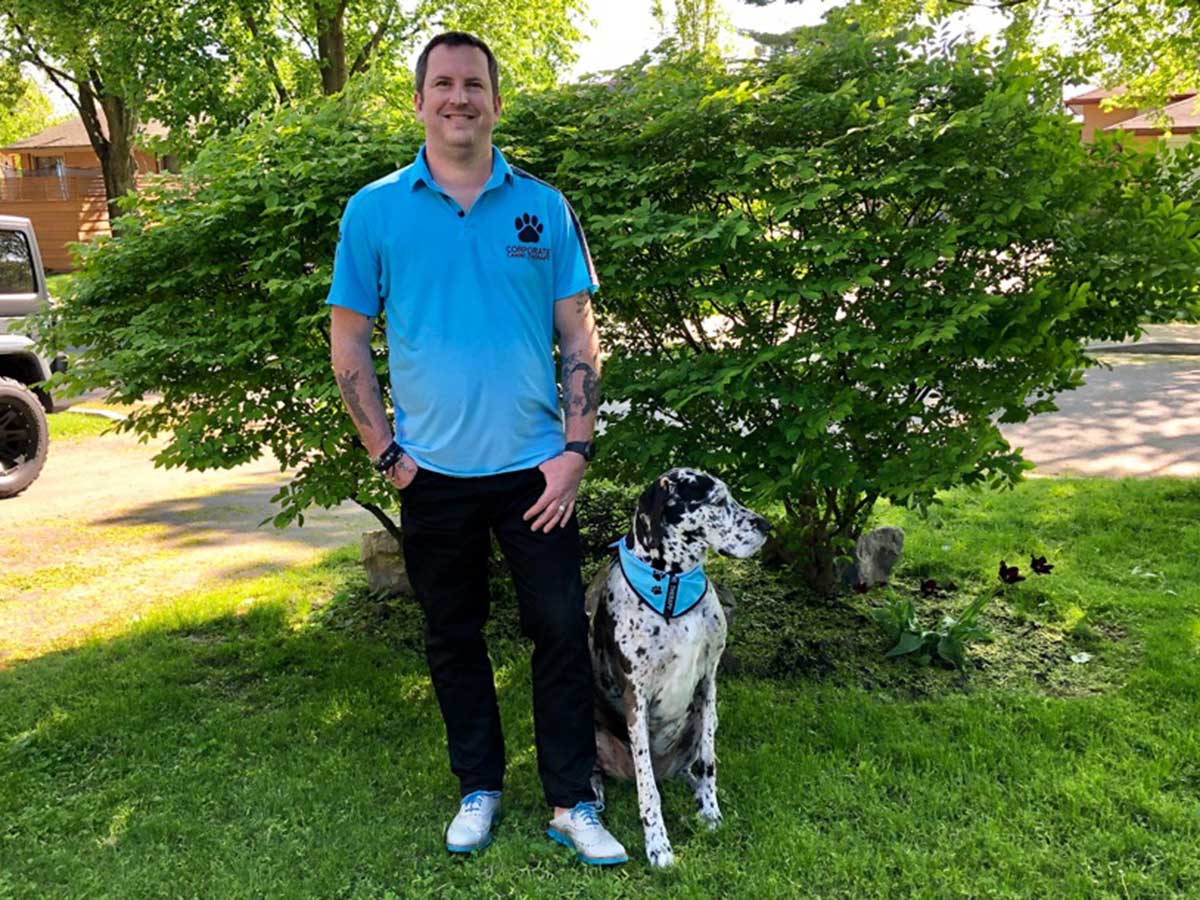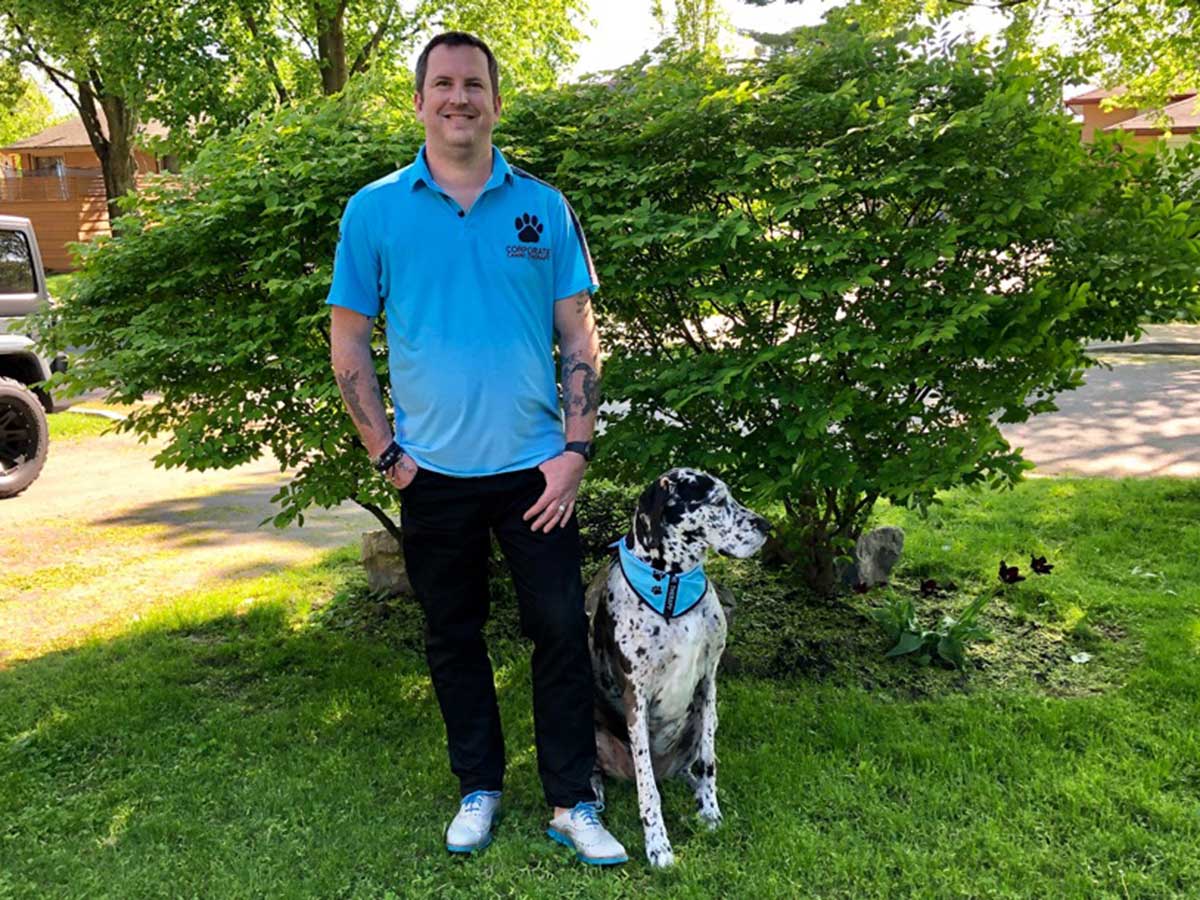
Pets aren’t allowed in your workplace? Try therapy dog visits
 Rodney Kaufman, founder of Corporate Canine Therapy, and his Great Dane, Harlow, have been volunteering with St. John Ambulance for four-and-a-half years and spending about four hours every Wednesday at Sick Kids since 2015. (Courtesy of Rodney Kaufman)
Rodney Kaufman, founder of Corporate Canine Therapy, and his Great Dane, Harlow, have been volunteering with St. John Ambulance for four-and-a-half years and spending about four hours every Wednesday at Sick Kids since 2015. (Courtesy of Rodney Kaufman)
While the idea of dog-friendly workplaces is definitely catching on in some circles, not every organization can or wants to have pets on the premises full time. For those situations, and many others, visits from therapy dogs can be an ideal solution.
“Companies might ask us to come in as part of a wellness event, then once they see how positive the experience has been, they might sign up for regular sessions,” says Rodney Kaufman, founder of Corporate Canine Therapy in Toronto.
Although Kaufman opened his company only eight months ago, his experience with dog handling goes back much further. He and his Great Dane, Harlow, have been volunteering with St. John Ambulance for four-and-a-half years. Since 2015, he has been spending about four hours every Wednesday at Sick Kids.
“Before I launched the company, people were always saying, ‘Could you come to my office?’ or ‘My mom’s in a retirement home’,” he explains. “So we decided to start a small operation with five handlers and their dogs—that’s what we consider a team—and now we have 25 teams. And we’re getting requests every day.”
POSITIVE TESTIMONIALS
As Kaufman’s website points out, dog therapy can bring big health and social benefits (such as lowering blood pressure, releasing calming endorphins and encouraging teamwork).
“As soon as people come into the room, we find there’s a change in them, and I have testimonials from senior people in law and accounting firms attesting to that fact,” he says. “I remember one senior executive who came in one day and you could just tell he was stressed. There was obviously something going on in his life. He just bent down and started hugging this 140-lb Great Dane and broke into tears. When I talked to him, he said one of his kids had just received a diagnosis that wasn’t good. Plus, it was tax time, so he was at his wit’s end. Within five to seven minutes, though, his entire demeanour had changed. He was sitting down, patting our dog, smiling and breathing normally.”
The company’s website also includes a moving testimonial from a family whose three-month-old son had been diagnosed with cancer: “Harlow and Rodney dedicated their time every week, for eight months, to our son,” it says. “While living in the hospital, those visits were undoubtedly the highlight of our week…Harlow and Rodney put a smile on our faces on the darkest of days...When we needed a hand to hold, Harlow gave us her paw. We are forever grateful for the love and support that they gave our family.”
HOW ARE THERAPY DOGS DIFFERENT?
Unlike service dogs, emotional support and therapy dogs are not certified in Canada, says Kaufman. They are simply well-behaved, completely non-aggressive dogs that their handlers can manage in any given situation. “I vet the dogs based on industry-established guidelines,” he says.
According to Kaufman, Corporate Canine Therapy is currently the biggest for-profit company in the market and it’s expanding rapidly. In past few days alone, he’s had calls from major Bay Street firms and manufacturers. “We’re actually advertising for more dog-and-handler teams,” he says. “Certain companies are hiring 24 dogs at a time.”
Companies have obviously tuned into the multiple advantages of on-site visits. “If you were walking down the street you’d see any number of dogs that you could ask to pat,” Kaufman says. “But when it’s in a business atmosphere, it’s like Christmas. I’m constantly hearing people say, ‘I was going to take off work today but I didn’t because I knew the dogs were coming.’”